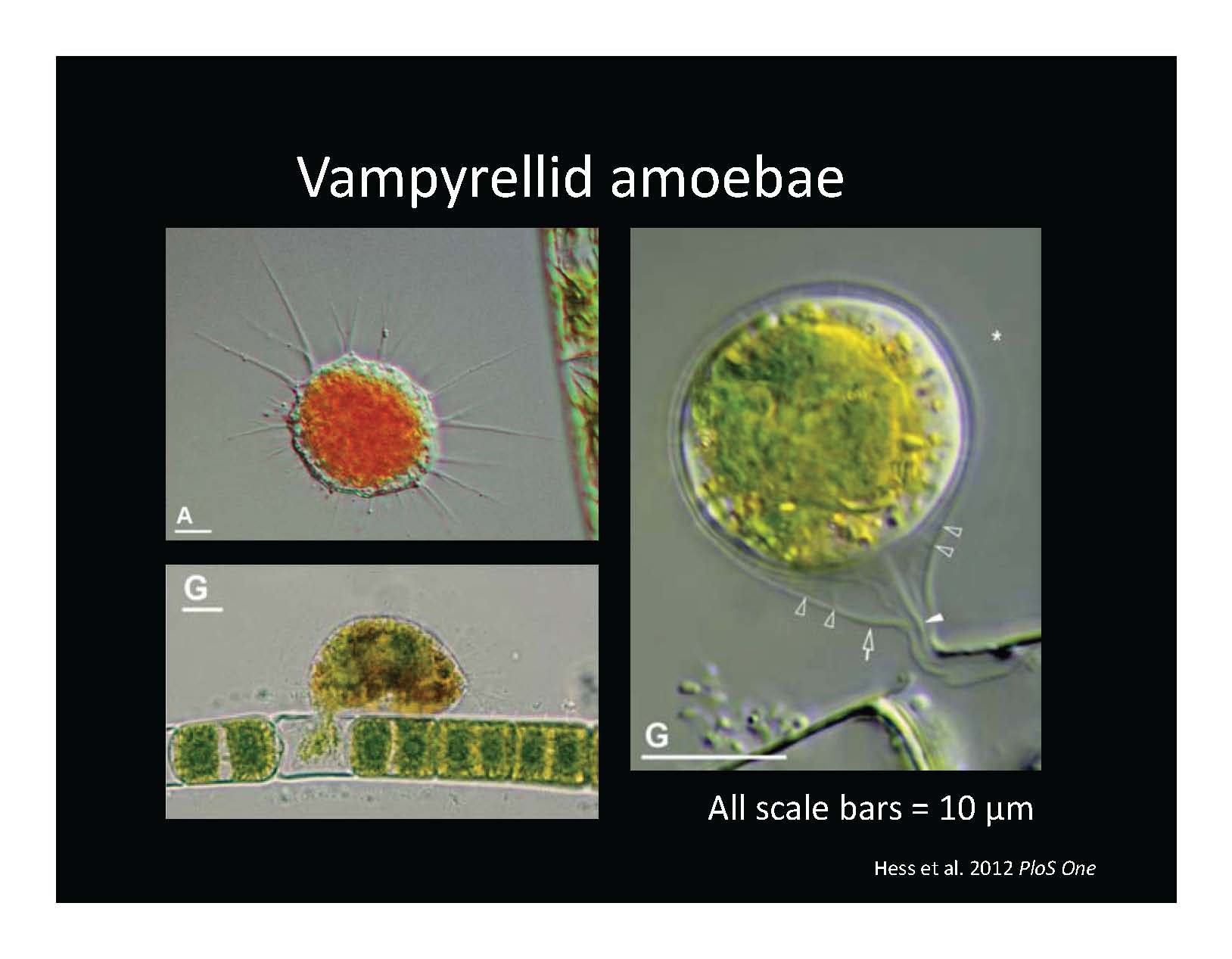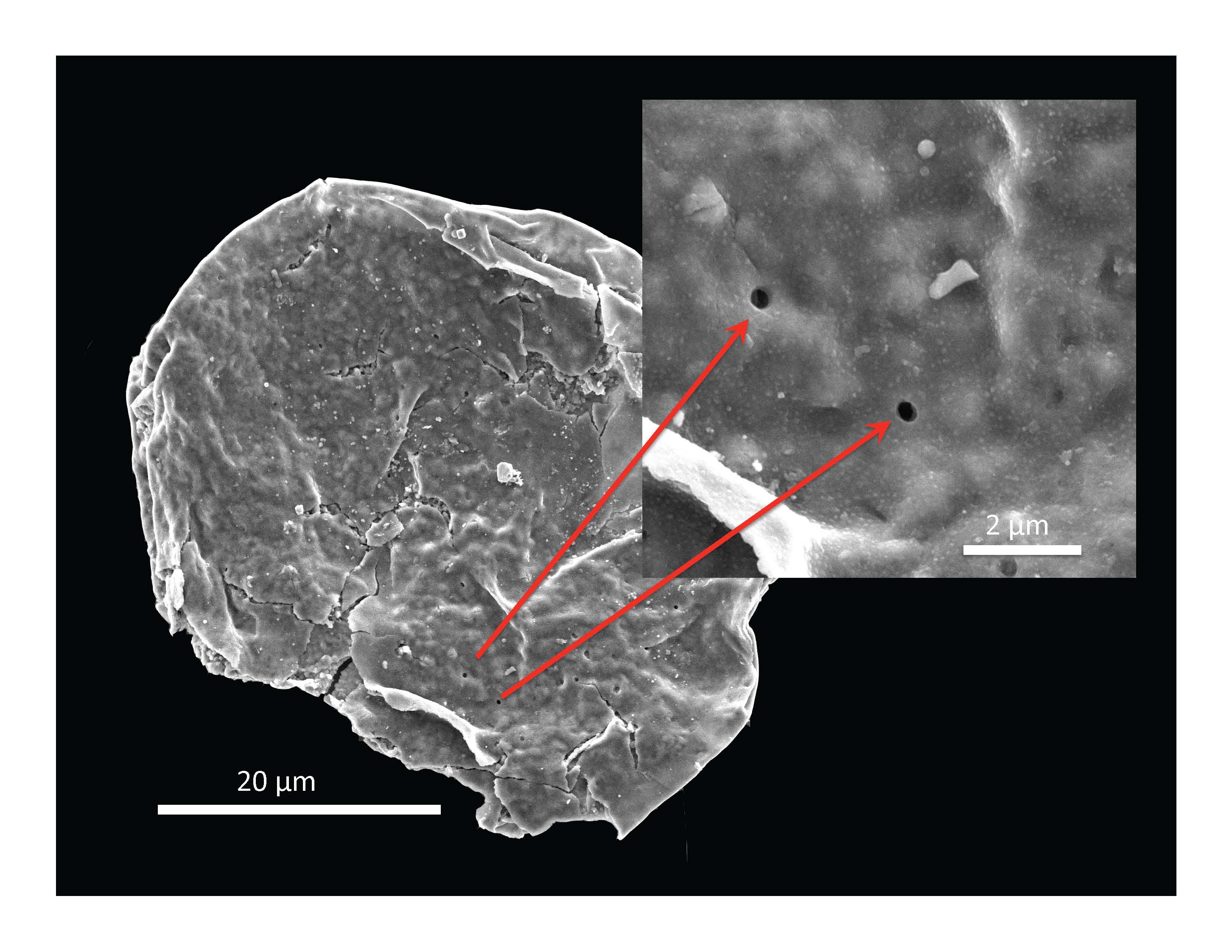The following is an article with the above title posted 6/4/13 by Zachary Babtkis, a Computer Resource Specialist and News Editor for the UCSB Earth Research Institute:
When Susannah Porter looks at microfossil remains from Precambrian protists (a group of single cellular organisms that include algae and protozoa), she looks for a set of sinister bites. Dr. Porter’s recent research focuses on holes she discovered in microfossils from ~750 million-year old mudstones collected near the bottom of the Grand Canyon which she believes may have been created by an organism known for its distinctive vampire-like mark. These microfossils are “about a tenth the size of a period,” and the bites are about a thousandth that size.
Like Porter’s favorite horror villain, Nosferatu, the vampyrellid amoebae feed by sucking the contents of their victim through bite-like holes. According to Porter, the fossil marks she found are strikingly similar to those on some modern fungal spores and green algae, known to have been made by vampyrellid amoebae, which leads to her suspicion that the same or a similar organism preyed on Precambrian protists. She further explains that predation on these early organisms might have been the first of its kind, potentially leading to the emergence of large size (i.e., multicellularity) and mineralized skeletons—both useful defenses against microscopic predators.
Porter, Associate Director of the Earth Research Institute and Associate Professor in the Department of Earth Science, notes that part of her enthusiasm for this subject stems from the fact that the study of early life is still in its infancy; it was not until the 1950s that scientists discovered the first Precambrian microfossils. The absence of a Precambrian fossil record famously bothered Darwin, who wrote about the “imperfection of the geological record” in On the Origin of Species. Although still largely unexplored, we now know through the work of paleontologists like Porter and her colleagues that life had appeared on Earth by 3.5 billion years ago, and that, by late Precambrian time, microbial life was diverse and widespread, and apparently included tiny vampires that preyed on unsuspecting victims.




